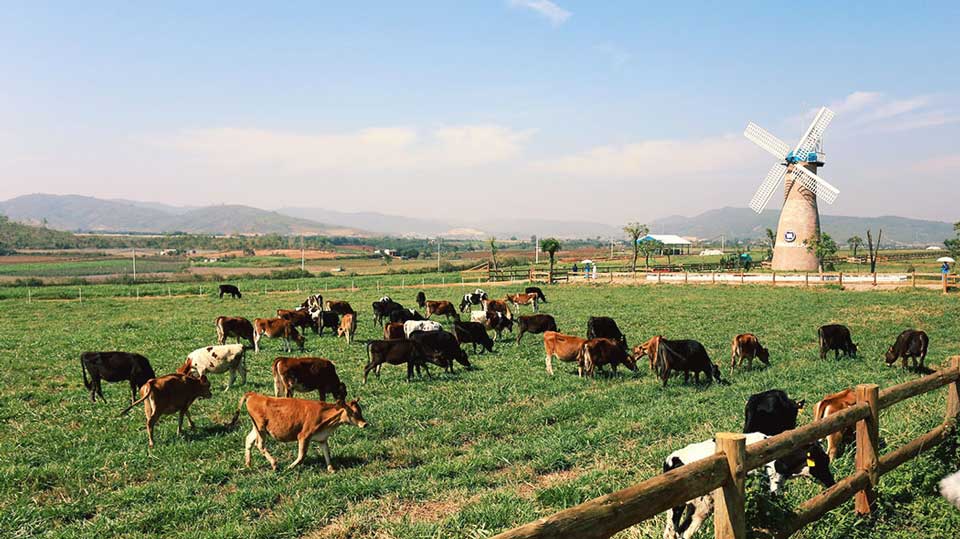[Guest blog by Peter Melchett, the Policy Director of the Soil Association in the U.K.]
In the UK, we have just had good news about the growth in organic sales in 2017. The Soil Association’s 2018 Organic Market Report reveals that our organic market is now worth £2.2 billion ($3.1 billion U.S. $), growing by 6% in 2017.
Some of the highest growth was in foodservice, including catering and restaurants. Sales of organic grew in these sectors by 10.2%.
The amount of UK farmland in conversion to organic rose 22% as farmers responded to the rise in demand for organic produce. The organic movement in Europe, and indeed in countries like China and India (where organic cotton is back in growth, and GM cotton on the decline), view growth in organic production and sales as hugely positive – for the environment, human health, creating jobs, producing high quality and healthy food, delivering the highest standards of animal welfare, and crucially in combatting climate change by enhancing soil carbon sequestration.

European governments now recognize multiple organic benefits supported by substantial, published scientific evidence, much of it coming from long-term research projects funded by sizable grants from the EU Commission.
Across Europe, public institutions feel justified to invest in the growth of organic farming. They are setting targets for incorporation of organic food in school and hospital meals, and other publicly funded institutions and programs.
The French Government have just announced that at least 50% of the food bought by public sector institutions must be organic or local, while Sweden is aiming for 25%, and in Denmark, the target is 60%. Denmark’s capital city, Copenhagen, is aiming for 100%.
However, some experts in the U.S. have suggested that there is a “growing trend in the U.S. toward organic in name only”. From a European perspective, it seems that this is, indeed, a real problem in the U.S., but it is really not, with rare exceptions, in the EU or UK.
Key Differences Between the U.S. and Europe
In Europe, there is an EU organic standard, which serves as a certification baseline, which all organic farms and food produced in the EU, and imported into the EU, must meet. However, unlike the U.S., the EU has always allowed higher organic standards at the country level, and these exist in many of the main European markets, including the UK, Germany, Italy and Sweden.
Indeed, the only large EU market which does not have higher organic standards is France, which relies solely on the EU standard. European countries associated with the EU, like Switzerland, also have significantly higher organic standards. For example, among other things, the main Swiss organic certifier, BioSwiss, bans the use of airfreight.
Allowing voluntary organic standards which are higher than the EU baseline has three very important and unequivocally positive effects. First, the task of crafting the operating rules and requirements embedded in new, higher standards (like the standards in Sweden designed to reduce the carbon footprint of organic farming), stimulates innovation in several areas critical to the long-run success of organic. These include defining goals, methods to certify compliance, time periods needed for new standards to take effect, and clear public messages about the reasons for the standards and what they achieve.
This flexibility also allows for some variation in standards to take account of the significant differences in farming practices in different European countries, although many feel greater variation in response to climatic, social and geographic variation would be sensible. While Europeans celebrate differences in farming methods, cuisine, and food culture across the EU, this has to be balanced by the high expectations for organic food in all EU countries.

Second, the existence of higher standards at the country level means that much of the organic food sold in the EU does indeed meet higher standards. For example, 75% of organic food sold in the UK is certified by the Soil Association, and our program contains a significant number of additional and/or higher standards that go further than the EU Regulation.
In Sweden, KRAV certifies most of the organic food sold, and they too have significantly higher standards than the EU baseline. The same is true of BioLand and other voluntary organic standards in Germany.
However, the voluntary higher standards across the EU are not so far away from the EU Regulation so as to create a division or a split in the market. This is because of the third significant impact of allowing higher voluntary standards, and their success in most European countries.
Higher standards place significant pressure on all those working on and adhering to the EU’s organic regulations, including civil servants in Brussels, European governments, organic businesses, certifiers, and consumer groups and other NGOs working to advance organic integrity and growth in the sector. As a result, there is some pressure on the EU to be proactive and innovative.
The capacity for innovation and change in both the EU-wide organic regulations, and the stricter standards adopted in specific countries, is in stark contrast to the situation in the U.S., where it is extremely difficult to change anything of real importance in the Organic Food Production Act of 1990, or the USDA’s National Organic Program. From a European perspective, this lack of ability to adapt and innovative in the U.S. may, over time, erode the strong competitive position still enjoyed by U.S. organic farmers and food companies as they compete with EU-based companies for high-value markets worldwide.
In any event, in Europe it is clear that voluntary higher standards, over time, do nudge the baseline EU organic regulation in a positive, stricter, more inclusive direction (’inclusive’ in the sense of the breadth of issues addressed).
Challenges persist in Europe. We must continually strive to improve our organic standards, whether set by the EU or by voluntary standards setters such as the Soil Association. We are subject to the same commercial pressures so evident in the U.S. Growth in the E.U. market for organic food has attracted big, multinational food businesses into the sector, a development some welcome and others fear. We are also subject to particular pressures at the moment because, as in the U.S., there are significant shortages of supply in the three biggest world markets for organic food – the U.S., EU and China.
While we contend with such commercial pressures, and shortages of organic produce, we have not faced anything like the pressure in the U.S. to either lower standards, or to keep existing standards unacceptably low. If anything, the European Commission has seen its role as trying to drive standards up to meet consumer expectations.

Europe, and indeed most other countries worldwide, have avoided the deep splits we have heard about in the U.S. organic community. Some of the practices now common in the U.S. on large-scale, intensive organic dairy farms, for example, would be unthinkable anywhere in the E.U.
Instead, our arguments about dairy standards tend to focus on whether traditional practices, carried out for hundreds of years, like tethering three or four cows in a barn on a Swiss mountain during the winter, should be allowed (because tethering may be unacceptable from an animal welfare point of view).
As well as the need to continually review organic standards to augment them so they reflect consumer and citizens’ expectations, we are well aware that there are some areas which organic standards do not cover, such as labour practices. In the EU, these tend to be covered, and often covered rather well, by general labour law, including requirements for minimum wages.
Indeed, the generally much stronger sets of regulations codifying minimally acceptable performance standards across the EU, coupled with a much more robust social safety net, reduces the pressure on EU organic programs and certifiers to make efforts to solve social problems and challenges that span all sectors of the economy and are not unique to farming or food industries.
In the case of imported organic produce, and products made from organic cotton, the organic movement in Europe works very closely with the Fair Trade organization, because of their expertise and track record in advancing fair wages and improved living conditions abroad.
Don’t Let Perfection Get it the Way of the Good

I hope it is clear to almost everyone that the huge advantages of organic food and farming should not be dismissed because there are a few examples where organic can be as, or even more destructive than industrial agriculture.
We need to work to ensure all organic farms meet high standards and the expectations of citizens and consumers, and that they deliver the huge benefits that organic farming as a whole clearly does. We need to look at the overall impact of a whole range of organic farms, and that’s what an enormous amount of good scientific research, mainly from Europe and North America, has done.
Researchers have documented organic’s far superior performance when it comes to farm wildlife, diffuse pollution, pesticide use and dietary risks, soil quality and soil carbon sequestration, and many other significant measures. The results are clear – overall, organic farming really does deliver.
The divisions in the U.S. organic food and farming community are unfortunate and counterproductive, but I’m glad to say they are not typical of what we see in most of the rest of the world, and certainly not in Europe. Perhaps some lessons can be gleaned from how Europeans have side-stepped or worked through the tensions now being experienced in the U.S. organic sector.

